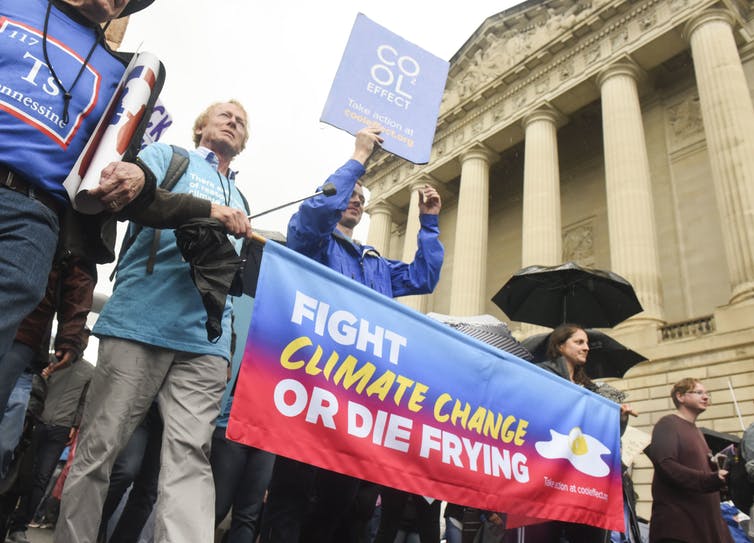This article was originally published by Ohio Valley ReSource.
Environmental groups have reached a settlement agreement with a petrochemical company in Ohio to beef up air pollution controls at a proposed petrochemical plant along the Ohio River.
Thailand-based PTT Global Chemical America and South Korea-based Daelim Industrial Co. have proposed building a multi-billion dollar ethylene cracker plant on a 500-acre tract of land in Belmont County, Ohio, just a few miles from Moundsville, West Virginia.
The plant would crack apart ethane — which is produced during natural gas fracking — into smaller molecules used in plastics and chemical manufacturing. The plant would produce an estimated 1.5 million tons of ethylene annually.
An air permit issued by the Ohio Environmental Protection Agency last December allowed the plant to emit 400 tons of volatile organic compounds and produce the equivalent carbon dioxide emissions of putting about 365,000 cars on the road annually.
Three environmental groups, the Sierra Club, Freshwater Accountability Project and Earthworks, challenged the air permit in January arguing pollution from the plant could harm communities and that the air pollution controls mandated by Ohio EPA were not sufficient.
The settlement signed Monday requires the company to use technology to find pollution leaks and repair them. The company would also install a weather station on site and create a website available to the public with emissions data.
In a statement, environmental groups praised the improvements, but remained opposed to the plant, which would be the second such facility in the region. About 30 miles northwest of Pittsburgh, Shell Chemical’s Monaca cracker plant is under construction. It’s slated to produce 1.6 million tons of ethylene each year and permanently employ about 600 workers when done, according to the company.
“This agreement will help protect local communities from dangerous air pollution should this facility be built, and we’ll continue to fight to ensure that it never comes to that,” said Sierra Club Organizer Cheryl Johncox.
Federal Support
A final investment decision by the project developer has not been made. Proponents envision the Ohio Valley as the next hub for plastics and petrochemical production, which they argue could drive investment and jobs to the region.
The Marcellus and Utica shale formations located in the Ohio Valley contain high levels of natural gas liquids, or NGL, which can be separated from their cousin methane to become valuable feedstocks for plastic and chemical production. A 2017 U.S. Department of Energy report found U.S. NGL production in the region is projected to increase over 700 percent in the 10 years from 2013 to 2023.
Last month, President Donald Trump toured the Shell cracker plant. In a wide-ranging speech to workers, he expressed his administration’s commitment to supporting an Ohio Valley petrochemical buildout.
In July, a top Department of Energy official testified in front of members of the West Virginia Legislature that the federal government is prioritizing expanding the petrochemical industry in Appalachia.
“Federal efforts are strong and continue to gain momentum,” Steven Winberg, DOE’s assistant secretary for fossil energy, told the Joint Committee on Natural Gas Development. “We also recognize that others are doing a lot and we believe that together we can make this Appalachian petrochemical renaissance happen for the benefit of the industry, the region and the country.”
In addition to concerns over air pollution, those opposed to a petrochemical buildout in the region point to climate concerns. A report released earlier this year by a coalition of environmental groups estimates production and incineration of plastics in 2019 will add more than 850 million metric tons of greenhouse gases to the atmosphere, or equal to the pollution of building 189 new coal-fired power plants.
The report projected by 2050, emissions from the entire plastics life cycle could account for as much as 14 percent of the earth’s entire remaining carbon budget.
Based at WVPB in Morgantown, WV, Brittany Patterson covers all things energy and environment.



